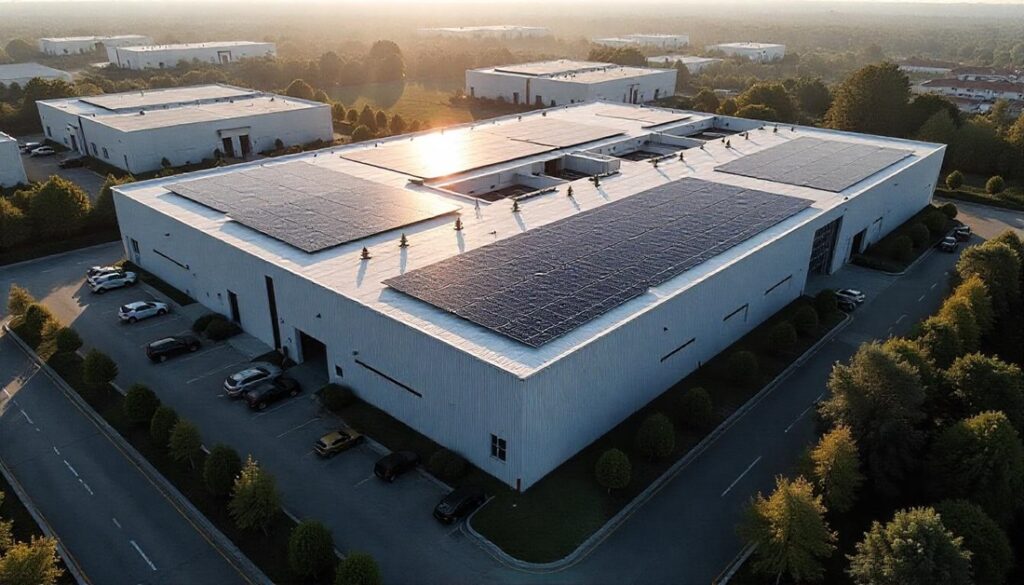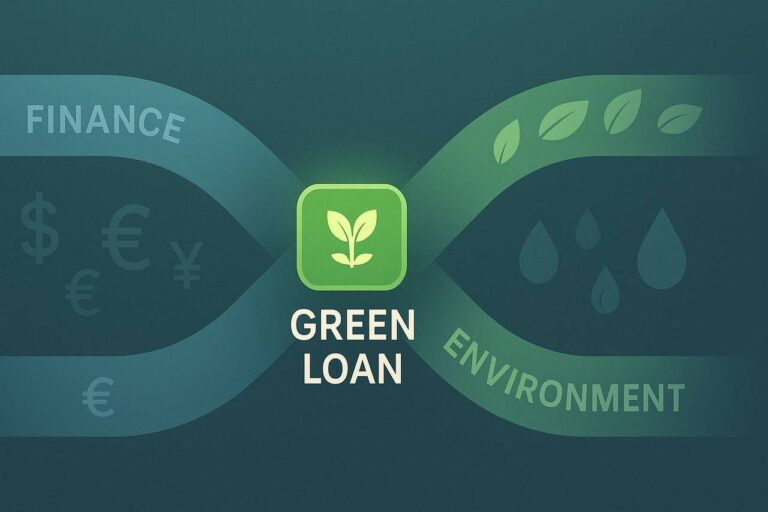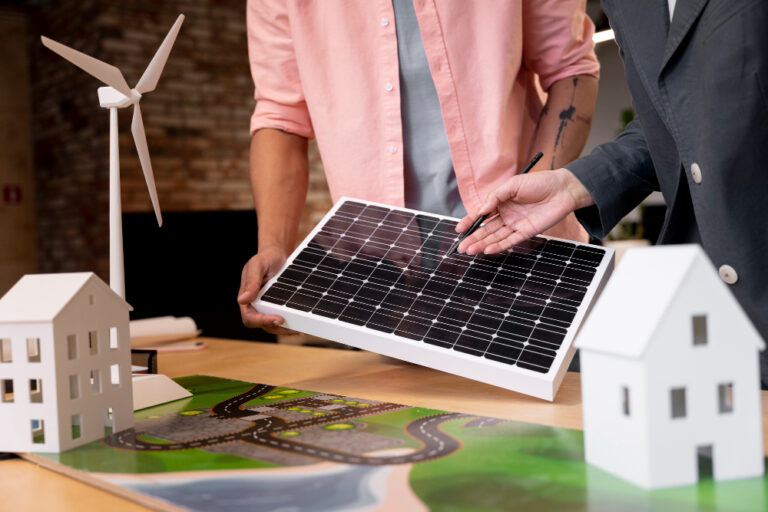Cambodia Green Loan Success Stories: Real-World Impact

Driving Impact: Real Green Loan Success Stories in Cambodia
Cambodia, a nation experiencing dynamic economic growth, is increasingly embracing sustainable business practices and green finance. This commitment is more than just policy; it’s a tangible shift transforming industries across the kingdom. While the concept of green loans is steadily gaining traction, many businesses and investors seek concrete evidence of their efficacy and impact. How are these specialized financial instruments truly making a difference on the ground?
This article will answer that question by showcasing compelling, real-world green loan success stories in Cambodia. We’ll illustrate how these specialized financial instruments are not just funding projects but actively transforming businesses, generating significant environmental benefits, and proving a strong return on sustainable investment. By examining these diverse case studies, readers will gain invaluable insights into the tangible power of green finance in Cambodia’s burgeoning green economy.
- Driving Impact: Real Green Loan Success Stories in Cambodia
- Beyond Finance: What Makes a Green Loan Project a “Success”?
- Case Study 1: Powering Up with Solar—A Garment Factory’s Green Transformation
- Case Study 2: Eco-Tourism Takes Flight—Sustainable Upgrades for a Hotel
- Case Study 3: Lighting Up Rural Lives—Microfinance Green Loans for Households
- Case Study 4: Sustainable Harvests—Green Loans for Smart Agriculture
- Conclusion: Inspiring Future Investments in a Greener Cambodia
- Frequently Asked Questions (FAQs) About Green Loan Success in Cambodia
Beyond Finance: What Makes a Green Loan Project a “Success”?
Before delving into individual narratives, it’s crucial to understand what defines a “success” within the context of green loans. Unlike conventional financing, the triumph of a green loan project’s success is measured by a dual impact: financial viability and measurable environmental benefits.
Successful green projects in Cambodia contribute directly to:
- Environmental Impact: This is paramount. Success means quantifiable reductions in carbon emissions (e.g., CO₂ reduction), significant water savings, efficient waste diversion, or a tangible decrease in pollution. These contributions align directly with Cambodia’s national environmental targets and global Sustainable Development Goals (SDGs).
- Economic Impact: Beyond environmental gains, a successful green loan project must deliver clear economic advantages. This includes reduced operational costs, increased profitability, enhanced market competitiveness, and often the creation of new green jobs.
- Long-term Value Creation: Truly successful green projects create sustained value for businesses and communities, ensuring resilience and adaptability in the face of climate change and evolving market demands.
These intertwined benefits underscore that green loans are not merely philanthropic gestures but smart, strategic investments for a sustainable future.

Case Study 1: Powering Up with Solar—A Garment Factory’s Green Transformation
“Green Garment Manufacturing Co.,” a large garment factory situated in an industrial zone near Phnom Penh, faced a common challenge: escalating electricity bills formed a significant portion of its operational costs. Coupled with growing pressure from international buyers demanding sustainable practices, the factory recognized an urgent need to reduce its carbon footprint and enhance its environmental credentials.
The solution came in the form of a green manufacturing loan from ACLEDA Bank Plc. This specialized financing enabled the factory to invest in a substantial 500kWp rooftop solar PV system. This wasn’t just an energy upgrade; it was a strategic move towards sustainable production.
The environmental impact was immediate and impressive. The solar array began generating approximately 600,000-750,000 kWh of clean energy annually, effectively reducing the factory’s reliance on grid power and offsetting a significant portion of its electricity needs. This translated to an estimated reduction of 400-500 tons of CO2 emissions per year, equivalent to planting over 10,000 trees.
Economically, the transformation was equally compelling. The factory witnessed a substantial 25-35% reduction in its monthly electricity bills, directly boosting its bottom line and increasing overall profitability. This reduction in operational costs, combined with an enhanced brand reputation for ESG compliance, made them a more attractive supplier for international fashion brands. The investment also proved to have an attractive payback period, estimated at 4-6 years, demonstrating the long-term viability of solar. This ACLEDA green loan success highlights how sustainable investments can drive both environmental stewardship and financial gain for energy-intensive industries.

Case Study 2: Eco-Tourism Takes Flight—Sustainable Upgrades for a Hotel
In the vibrant tourist hub of Siem Reap, “The Eco-Stay Hotel” sought to solidify its position as a leading sustainable accommodation provider. Facing high utility bills from outdated air conditioning and lighting systems and recognizing the global shift towards green tourism, the hotel sought a solution to enhance efficiency and appeal.
Through a targeted green hotel finance Cambodia loan from a local commercial bank, The Eco-Stay Hotel embarked on a comprehensive sustainability upgrade. This included installing energy-efficient HVAC (heating, ventilation, and air conditioning) systems, replacing all conventional lighting with LED bulbs, and implementing water-saving fixtures throughout the property.
The environmental impact was significant: the hotel reduced its overall electricity consumption by an estimated 20-30% and achieved substantial water savings of 15-20%. Beyond measurable reductions, these upgrades also improved indoor air quality and reduced the hotel’s overall ecological footprint.
Economically, the benefits were clear. The considerable reduction in monthly utility bills translated into thousands of dollars in savings, directly boosting the hotel’s profitability. Furthermore, the hotel gained recognition as a truly sustainable establishment, making it highly marketable to the growing segment of eco-conscious tourists. This led to potentially increased occupancy rates and revenue while also enhancing the property’s overall value. This case study demonstrates how sustainable tourism investment through green loans can directly improve profitability and brand appeal.

Case Study 3: Lighting Up Rural Lives—Microfinance Green Loans for Households
In remote villages across provinces like Kampong Cham and Kampong Thom, countless rural households face a fundamental challenge: limited or no access to grid electricity. This often leads to reliance on costly and unhealthy energy sources like kerosene lamps and disposable batteries, hindering productivity and posing health risks.
Addressing this critical need, many families within these communities found a lifeline through microfinance green loans in Cambodia provided by institutions like CAMMA Microfinance Plc. These small-scale loans empowered households to purchase and install affordable solar home systems, bringing reliable, clean electricity directly to their homes.
The environmental impact was profound yet simple: the elimination of kerosene lamp use drastically reduced indoor air pollution and the associated health risks. It also curtailed carbon emissions from burning fossil fuels and minimized the accumulation of hazardous battery waste.
The economic and social impact on these communities was transformative. Families saw significant savings on daily energy expenses, redirecting that money towards other necessities or even small businesses. With reliable lighting, children could extend their study hours, improving educational outcomes, while adults could engage in productive activities (like handicraft production) after dusk, leading to increased household income. Overall, the green loans contributed to improved health, enhanced quality of life, and greater safety within these once-dark homes. This truly highlights the powerful social impact finance can achieve through accessible green microfinance.

Case Study 4: Sustainable Harvests—Green Loans for Smart Agriculture
“Green Rice Farm,” a large-scale rice farm located in Cambodia’s agricultural heartland, Battambang province, recognized the need to optimize its water usage and enhance overall productivity. Traditional irrigation methods led to significant water wastage and high operational costs due to fuel-powered pumps, leaving the farm vulnerable to droughts and rising energy prices.
To overcome these challenges, the farm secured a green agriculture finance Cambodia loan from a leading commercial bank. This enabled them to invest in modern, efficient irrigation systems, specifically a drip irrigation system powered by solar energy.

The environmental impact was significant: the farm achieved an impressive 30-40% reduction in water consumption. By transitioning to solar-powered pumps, they also substantially reduced carbon emissions associated with burning fossil fuels for irrigation. This sustainable approach also led to improved soil health through optimized water delivery.
Economically, the farm experienced clear benefits. Lower operational costs from reduced water and fuel consumption directly boosted profitability. More importantly, the precise water delivery led to increased crop yield and quality, ensuring higher revenue and greater resilience against climate variability. This made “Green Rice Farm” not only more profitable but also a more attractive supplier for markets demanding sustainably produced crops. This case demonstrates the direct link between green agricultural technology, resource efficiency, and improved farmer livelihoods, fostering farming efficiency loans and growth.
Conclusion: Inspiring Future Investments in a Greener Cambodia
The green loan success stories in Cambodia showcased here are not isolated incidents; they represent a powerful, growing trend across diverse sectors. From transforming energy-intensive manufacturing to lighting up rural homes and revolutionizing agricultural practices, these narratives demonstrate the tangible environmental and economic benefits that accrue when finance meets sustainability. They offer valuable insights and undeniable proof of the viability and strong return on sustainable investments within the Kingdom.
For businesses contemplating eco-friendly upgrades or investors seeking impactful opportunities, these success stories provide compelling inspiration. The Cambodian financial landscape, with its growing network of green loan providers and supportive regulatory environment, is ripe for further sustainable investment.
We encourage businesses and investors to explore green loan opportunities with Cambodian financial institutions, learn from these proven successes, and become an integral part of the nation’s green transformation journey. Take the leap, invest sustainably, and help Cambodia build a lasting legacy of environmental stewardship and economic vitality for generations to come.
Frequently Asked Questions (FAQs) About Green Loan Success in Cambodia
- Q: Can small businesses and individuals in Cambodia also access green loans?
- A: Yes. While large-scale projects benefit, microfinance institutions (MFIs) like CAMMA Microfinance offer green loans tailored for small businesses and even individual households, especially for solutions like solar home systems.
- Q: How do green loans contribute to a business’s profitability?
- A: By funding energy-efficient upgrades or renewable energy installations, green loans help businesses significantly reduce operational costs (e.g., electricity bills), improve resource efficiency (e.g., water savings), and enhance their brand reputation, all of which contribute to increased profitability.
- Q: Are there specific reporting requirements for green loan recipients in Cambodia?
- A: Yes, most green loan agreements require borrowers to report on the environmental impact of their financed projects (e.g., CO₂ reductions, energy savings) to ensure transparency and accountability, aligning with international Green Loan Principles.
- Q: How does a green loan improve a company’s image with international partners?
- A: By opting for green financing, a company demonstrates a clear commitment to environmental, social, and governance (ESG) principles. This can enhance its attractiveness to international buyers, investors, and partners who prioritize sustainable supply chains and responsible business practices.
- Q: What kind of environmental benefits can typically be expected from green loan projects?
- A: Expected environmental benefits vary by project but commonly include reduced greenhouse gas emissions, decreased water consumption, lower waste generation, reduced reliance on fossil fuels, and enhanced biodiversity protection.



